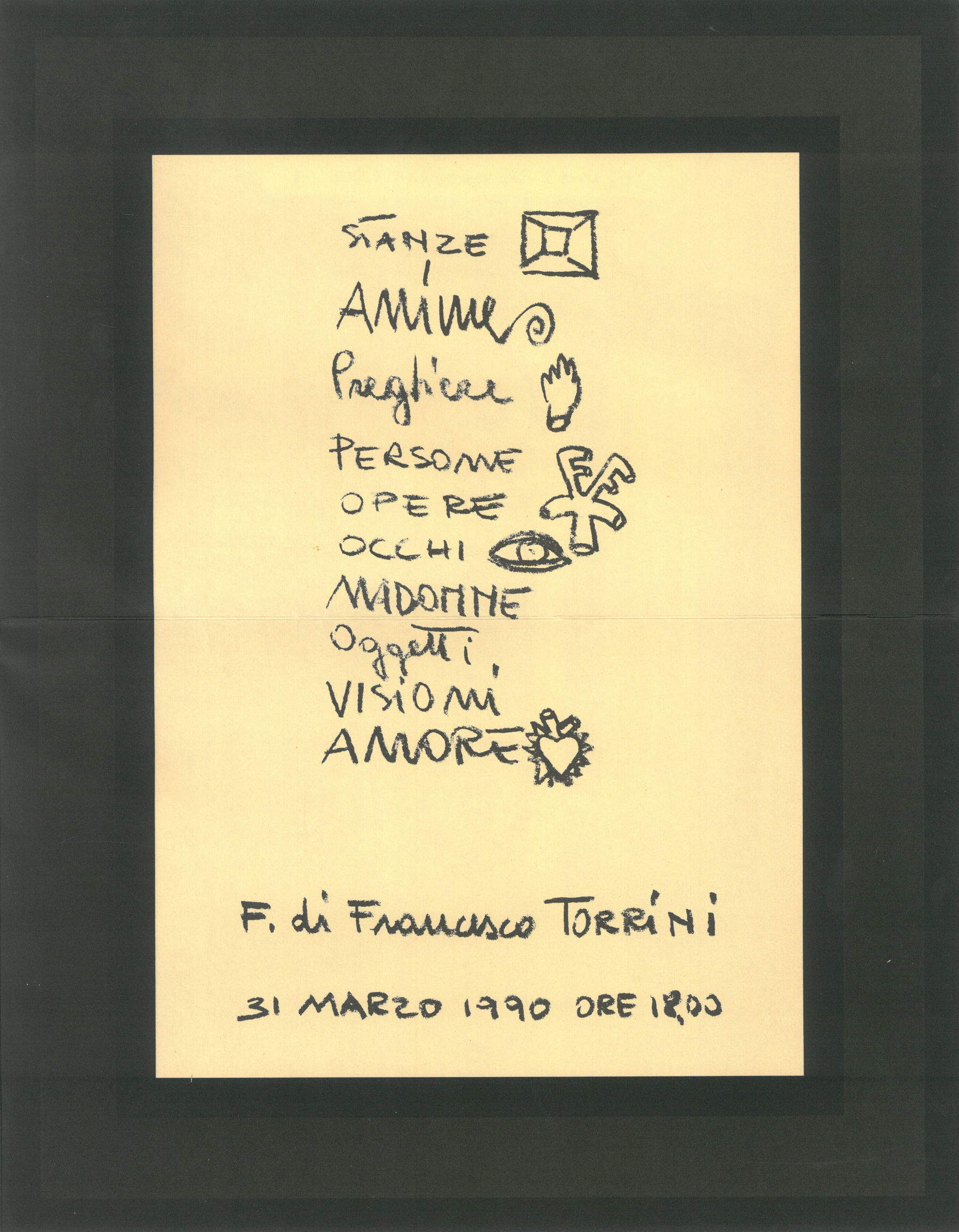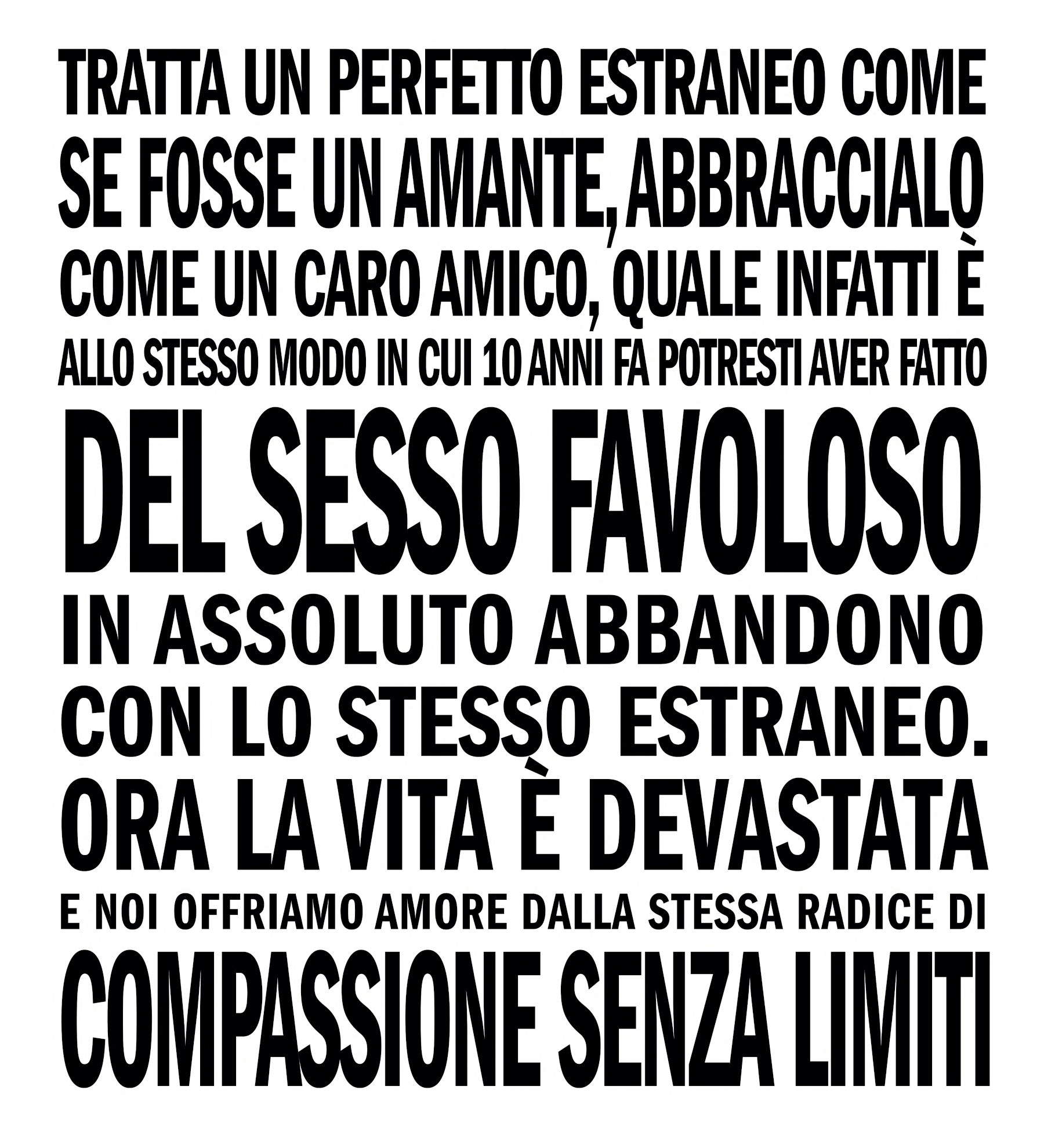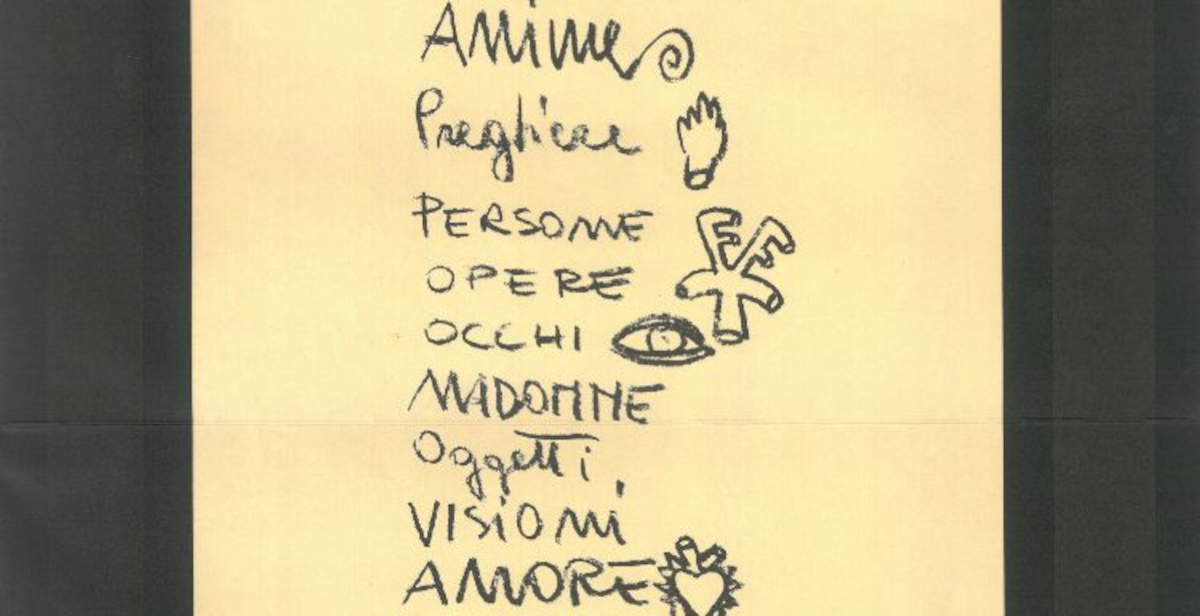From October 4, 2025 to May 11, 2026, the Luigi Pecci Center for Contemporary Art in Prato presents LIVE. Art and Affects, HIV-AIDS in Italy. 1982-1996, curated by Michele Bertolino. This is the first institutional exhibition to address, from an artistic and documentary perspective, the HIV-AIDS crisis in the Italian context. A precise time frame, from the first report of overt AIDS in the country in 1982 to the introduction of antiretroviral therapies in 1996, frames a project that intends to reconstruct a removed memory, restoring voice and visibility to those who lived through that season through art, poetry, activism and the intimacy of affection.
The initiative is part of a historical continuity with the Pecci Center itself, which between 1992 and 1994 had promoted numerous activities related to raising awareness about AIDS, against stigma and misinformation. On display today, permanently in the Eccentrica collection, is Commemuro (1993) by Francesco Torrini, a work that remembers people who have died from AIDS. LIVE recognizes this legacy and relaunches it, drawing on the collaboration of a scientific committee of curators, archivists and activists committed to rereading those years in light of contemporary questions.
The opening of the exhibition is entrusted to a new film production made for the occasion by Roberto Ortu, with the support of Candy and in direct dialogue with the curator. The film collects and voices poetic texts by authors such as Dario Bellezza, Massimiliano Chiamenti, Nino Gennaro, Ottavio Mai, La Nina, Marco Sanna and Pier Vittorio Tondelli. Interpreting them are actresses, activists and artists who make present the words of those who, living with HIV, have written about themselves and their time. The result is a reflection on the capacity of affection to become political matter and existential language, explicitly asking: how do we love together?

The backbone of the exhibition is represented by an archive created in collaboration with Valeria Calvino, Daniele Calzavara and the White Rabbits. It contains documents, posters, newspaper articles, sound recordings and videos that sketch the historical, social and cultural context of Italy between 1982 and 1996. The materials are not arranged according to a fixed museum hierarchy, but placed on large mobile showcases, equipped with wheels, that allude to the possibility of a constantly changing narrative. This fragmentary but dense ensemble also includes the contributions of Emmanuel Yoro and the Tomboys Don’t Cry collective, who propose contemporary interpretations and highlight omissions and omissions in the dominant narrative.
In dialogue with the archive, the artworks on display restore personal experiences, aesthetic research and political tensions that ran through those years. These are visual testimonies that, sometimes shouted and sometimes whispered, speak of the complexity of a time marked by illness but also by a powerful creative vitality. The Italian works are interwoven with those of international artists whose research, presented in Italy between 1982 and 1996, left a mark on the artistic community and activism. This is the case with the posters of the Gran Fury collective, exhibited at the 1990 Biennial and now once again on view in Italy, the works of Keith Haring, the blue organza curtains of Felix Gonzalez-Torres (previously presented in 1991 at the Castello di Rivara), and the works of David Wojnarowicz and Walter Robinson, exhibited in Milan in 1984 at the initiative of Corrado Levi.
Three monographic rooms are dedicated to Nino Gennaro, Francesco Torrini and Patrizia Vicinelli, three central figures in the narrative of the relationship between body, word and image during the years of crisis. Patrizia Vicinelli transforms the poetic word into bodily matter, fragile and resistant, capable of affirming a desire for freedom. Nino Gennaro, playwright and activist, reflects on affection, joy, marginality and the need for recognition within a social fabric marked by mafias and struggles for the right to housing. His works interweave collage, verbo-visuals and theatrical practices. Francesco Torrini, active in the Florentine community of the 1980s and attentive to the international debate, proposes an aesthetics of the body as a space of memory and spiritual affirmation, secular and relational. For all three, HIV-AIDS is the lens through which to read the world, grasp its precariousness and imagine responses that appeal to beauty and closeness.

The installation designed by Giuseppe Ricupero reflects these choices. Developed in shades of white, it is proposed as an open, sunny crossing between works and voices that have often been relegated to the margins. The exhibition alternates mobile structures and stations tailored to each artist, seeking a balance between museum space and the intimacy of the private relationships, daily gestures, and bodies that inhabited that season. The exhibition closes with a series of explicit questions that run throughout the project: how can one experience love and joy in a time marked by darkness? Where do anger and hope settle when loss seems to dominate? What words, images and connections can still offer comfort and guidance, now as then?
LIVE proposes a collective narrative that seeks to activate a living memory by connecting affects, languages and struggles. With this in mind, the exhibition catalog, published by Axis Axis, is divided into two volumes. The first, LIVE. Archive, collects works and documents according to a linear chronological order, offering a tool for consultation and in-depth study. The second, LIVONO. Reader, includes ten unpublished essays, testimonies, poems and letters by some of the artists and women artists featured in the exhibition. The project is realized with the support of Intesa Sanpaolo as Partner, with the contribution of Candy for the production of the film and with the sponsor Enrico Pecci di Alberto Pecci & C. The press conference is scheduled for Oct. 2 at 11:30 a.m., while the opening to the public is set for the following day, Oct. 3 at 6 p.m.
 |
| At the Pecci Center, the first exhibition on HIV-AIDS in Italian art between 1982 and 1996 |
Warning: the translation into English of the original Italian article was created using automatic tools. We undertake to review all articles, but we do not guarantee the total absence of inaccuracies in the translation due to the program. You can find the original by clicking on the ITA button. If you find any mistake,please contact us.